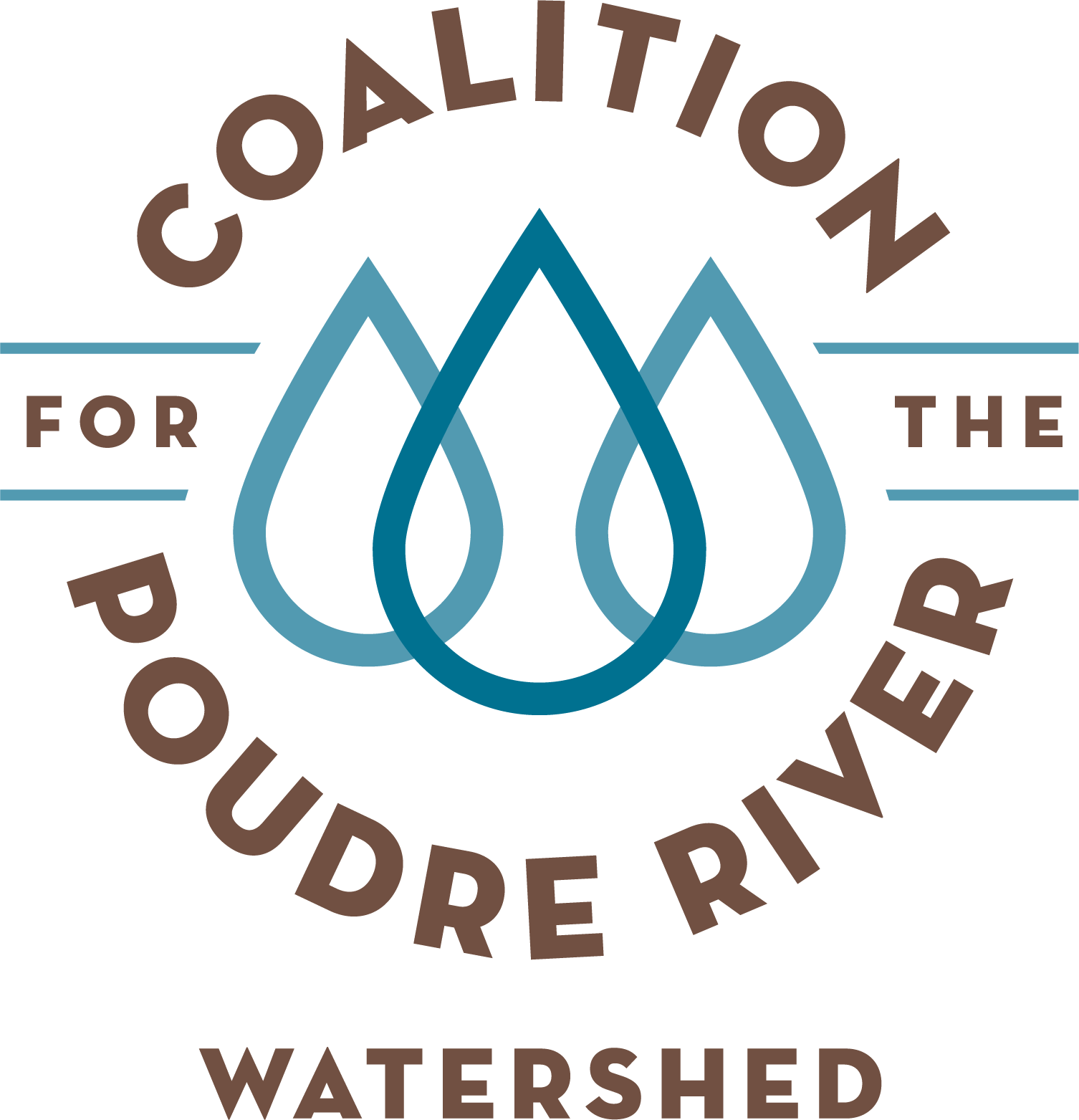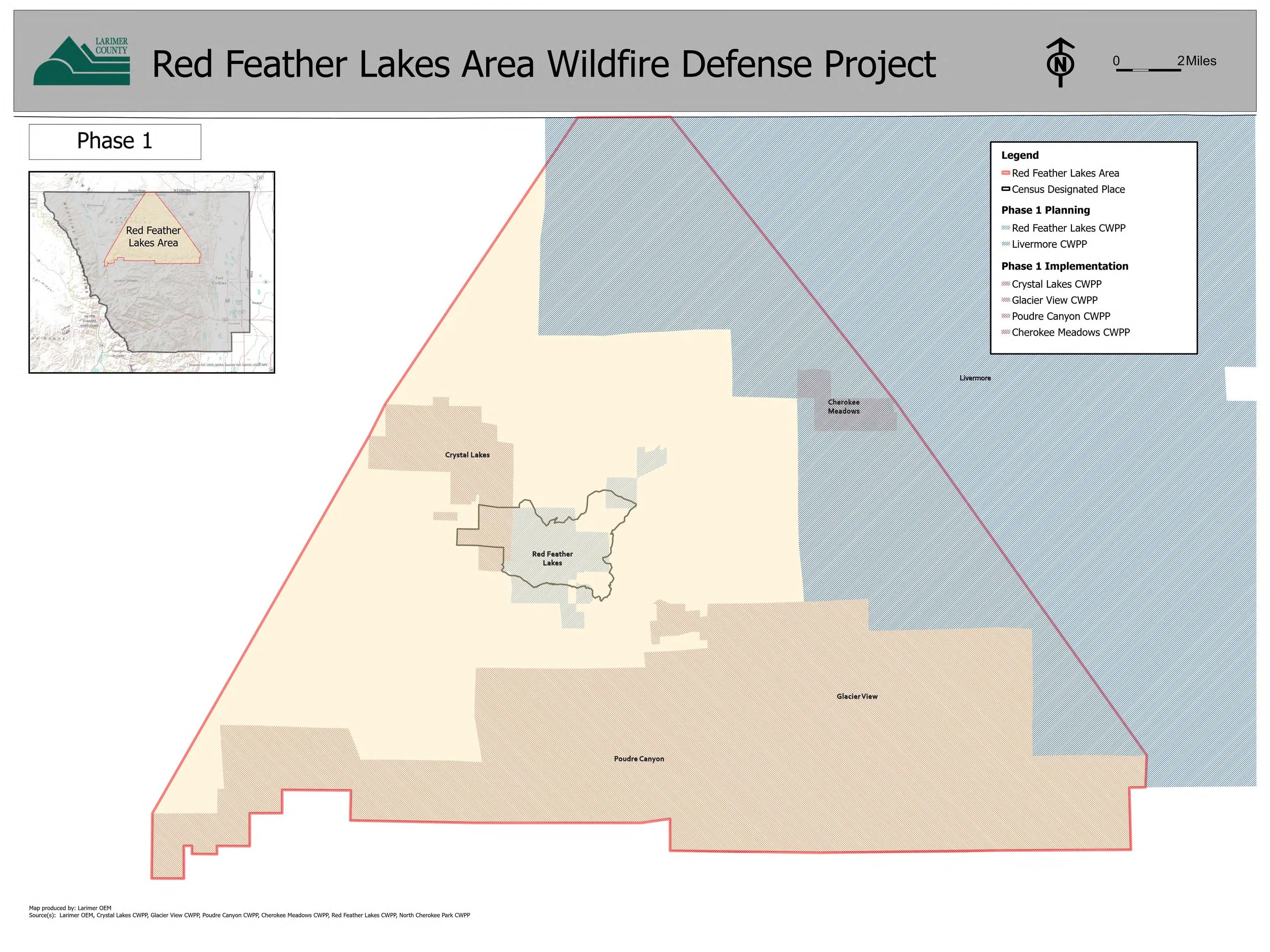First Roadway Fuels Treatment Begins in Red Feather Lakes Area Wildfire Defense Project
Earlier this month work started on the first roadway treatment within the Red Feather Lakes Area Wildfire Defense Project, a multi-year, $9.7M grant co-managed by the Coalition for the Poudre River Watershed (CPRW) and the Larimer County Office of Emergency Management. Funding from this grant is available to treat up to 10 miles of roadway in the project area. The Larimer County Sheriff’s Office’s recently expanded wildland fire team, the Phantom Canyon Crew, will complete these roadway treatments.
The North Rim Road Roadway Treatment 1 project was prioritized by the Glacier View Fire Protection District Community Wildfire Protection Plan (CWPP). The work will address fuels along the eastern side of the roadway of North Rim Road, in order to improve the route as an evacuation corridor, and reduce wildfire intensity moving west to east should a wildfire approach the community of Glacier View Meadows from the west.
The project area comprises private properties along North Rim Road, north of Elkhorn Creek, and within the Glacier View Fire Protection District. Forest type in the treatment area is generally ponderosa pine and dry mixed-conifer, with components of aspen and riparian vegetation.
The Red Feather Lakes Area Wildfire Defense Project will improve the wildfire defense of the entire Red Feather Lakes area, accomplished through specific risk reduction and preparedness activities. Project activities will occur within the geographic boundaries (see map below) defined in the four current Community Wildfire Protection Plans (CWPPs) and are designed to meet goals outlined in these current CWPPs. Project activities will include: wildfire mitigation treatments in open space, along roadways and on private properties; education on home ignition zone concepts and mitigation work to establish or improve defensible space; improvements to community wildfire evacuation routes, plans and procedures; and enhancing of community capacity to deal with post-treatment woody biomass. All components together will dramatically reduce wildfire risk in the Red Feather Lakes area, to save lives, protect property, improve forest and watershed health, and improve the resilience of the Red Feather Lakes area.



